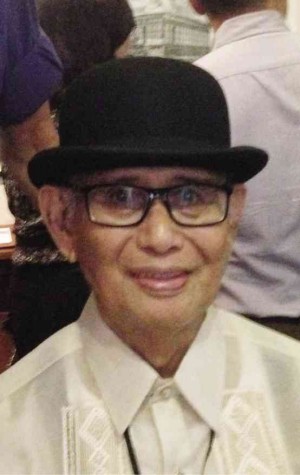Painter talks about peace through his art
ANGELES CITY—At 84 and undergoing dialysis for kidney failure, artist Daniel Dizon is doing his bit to help defend Philippine territory in the West Philippine Sea.
His way is nonviolent, having gone through World War II as a boy and learning from four of his elders who fought in the Philippine Revolution against Spain in 1896.
Dizon speaks the language of peace and national freedom through his paintings.
His “Bilungan ning Kasalesayan” (Pages of History) opened in this former American base town on Tuesday, at a time when the country faces what he called an “aggressive nation” in China.
The exhibit consists of watercolor illustrations of soldiers wearing uniforms and lugging firearms in the Philippine Revolution and images of American and Japanese military personnel. It includes his paintings of Moro warriors and Huk guerrillas in watercolor and pencil.
Article continues after this advertisementThe works belong to a series Dizon completed in 1990 and are shown to evoke dignity and sacrifice of men and women in times of conflict.
Article continues after this advertisementDizon’s current works in pen are also displayed. Portraits of soldiers, like Capt. Robert Prince who led the raid on a Japanese camp to free prisoners of war in Cabanatuan City in 1945, give out haunting, at time sad, look.
The exhibit brings in large illustrations in pen of colonial landmarks in Manila and Pampanga, which Dizon did to cope with grief after his wife, Enriqueta Dominguez, died in 2012. He turned to pen, which requires a lot of patience, to save this almost lost art.
“I want the youth to learn our precious history as a people who love nationalism and freedom,” Dizon told the Inquirer when asked why he mounted the art show.
He said the tension in the West Philippine Sea should be resolved by dialogues and cooperation, not through war. “I was so much influenced by what I saw during the war years,” he said, adding that showing people and scenes in war freezes the grim reminders of conflict.
At 11 and using smuggled pencils from the former Clark Air Base, he painted portraits of Japanese soldiers that they sent to their families in Japan.
Techniques were taught by his father, the late Vicente Alvarez Dizon, who carved a golden moment for Philippine art when he won the top prize in the Golden Gate International Exposition in California in 1939.
The elder Dizon’s painting, “After the Day’s Toil,” bested 77 artists, including Spanish surrealist painter Salvador Dali.
Dizon’s elders—paternal grandfather Lt. Jose Sampedro Dizon, maternal grandfather Lt. Jose Pedro Henson, maternal foster granduncle Lt. Alfredo Ganzon and grandfather-in-law Lt. Emilio Bernales Dominguez—enriched his research.
